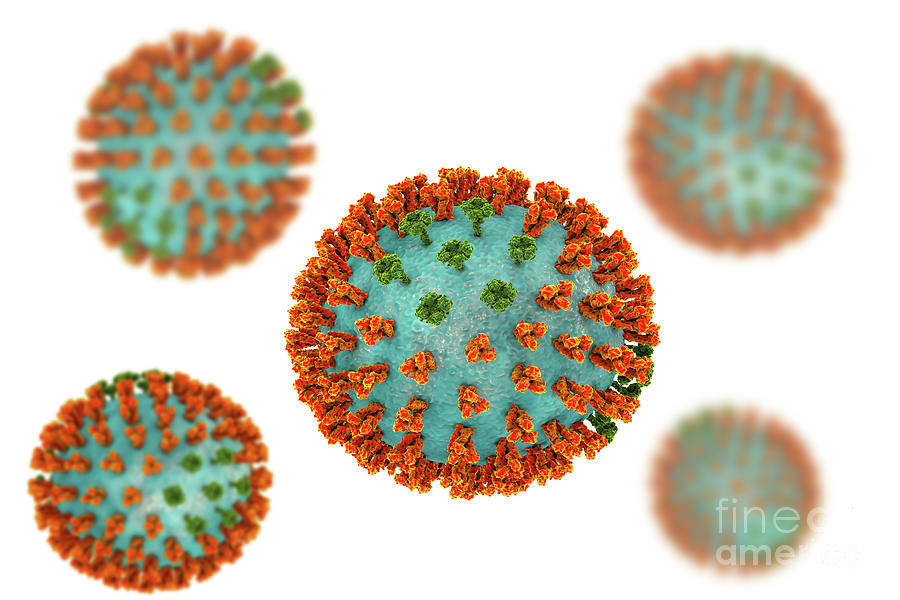Understanding Influenza, A Virus Subtype H3N2 Outbreak in India
Influenza A virus subtype H3N2 has been circulating globally since 1968 and is one of the most common influenza viruses. Recently, India has reported an increase in the number of cases of H3N2 influenza. In this blog script article, we will discuss the H3N2 subtype, its symptoms, transmission, and prevention measures.
What is Influenza A virus subtype H3N2? Influenza A virus subtype H3N2 is a type of influenza virus that can infect humans and animals. It is a highly contagious virus that causes respiratory illness. H3N2 is one of the three types of seasonal influenza viruses, the other two being H1N1 and influenza B.
Symptoms of Influenza A virus subtype H3N2: The symptoms of H3N2 are similar to other types of influenza viruses. The symptoms may include:
- Fever
- Cough
- Sore throat
- Runny or stuffy nose
- Body aches
- Headache
- Fatigue
Transmission of Influenza A virus subtype H3N2: H3N2 influenza virus is highly contagious and spreads through respiratory droplets when an infected person coughs, sneezes, or talks. The virus can also spread by touching surfaces contaminated with the virus and then touching the nose or mouth.
Prevention of Influenza A virus subtype H3N2: The following measures can help prevent the spread of H3N2 influenza:
Get vaccinated: Vaccination is the most effective way to prevent the flu. The flu vaccine is updated every year to protect against the most prevalent strains of influenza viruses.
Wash hands frequently: Washing hands frequently with soap and water can help prevent the spread of the virus.
Cover nose and mouth when coughing or sneezing: Covering the nose and mouth with a tissue or sleeve when coughing or sneezing can help prevent the spread of the virus.
Avoid close contact with infected people: Avoiding close contact with infected people can help prevent the spread of the virus.
Stay home when sick: If you are sick, stay home to avoid spreading the virus to others.
Influenza A virus subtype H3N2 is a highly contagious virus that causes respiratory illness. The symptoms are similar to other types of influenza viruses, and the virus spreads through respiratory droplets and by touching contaminated surfaces. Vaccination, frequent hand washing, and avoiding close contact with infected people are some of the ways to prevent the spread of the virus. It is important to take preventive measures to protect ourselves and others from this virus.
Information on Influenza A virus subtype H3N2 in India:
In recent months, India has reported an increase in the number of H3N2 influenza cases. According to the National Centre for Disease Control (NCDC), as of March 2023, there have been over 17,000 laboratory-confirmed cases of influenza in India, with H3N2 being the predominant subtype.
The increase in cases has been attributed to a few factors, including:
Weather changes: India has experienced a sudden change in weather patterns, with a decrease in temperature and increased humidity. This change in weather is known to contribute to the spread of influenza viruses.
Low vaccination rates: India has a low vaccination rate for influenza, with only a small percentage of the population receiving the flu vaccine. This leaves a large proportion of the population vulnerable to the virus.
High population density: India has a high population density, which makes it easier for the virus to spread from person to person.
The Indian government has taken several measures to control the spread of H3N2 influenza, including:
- Increasing surveillance: The government has increas
ed surveillance for influenza-like illnesses (ILI) and severe acute respiratory infections (SARI) to track the spread of the virus. Promoting vaccination: The government has launched a nationwide campaign to promote influenza vaccination and increase the vaccination rate in the population.
Issuing guidelines for healthcare workers: The government has issued guidelines for healthcare workers on the prevention and management of influenza cases.
Providing treatment: The government has made antiviral medications available for the treatment of influenza cases.
In conclusion, the increase in H3N2 influenza cases in India highlights the need for increased vaccination rates and preventive measures. The government's efforts to control the spread of the virus are commendable, but it is important for individuals to take personal responsibility and follow preventive measures to protect themselves and others from the virus.

Comments
Post a Comment